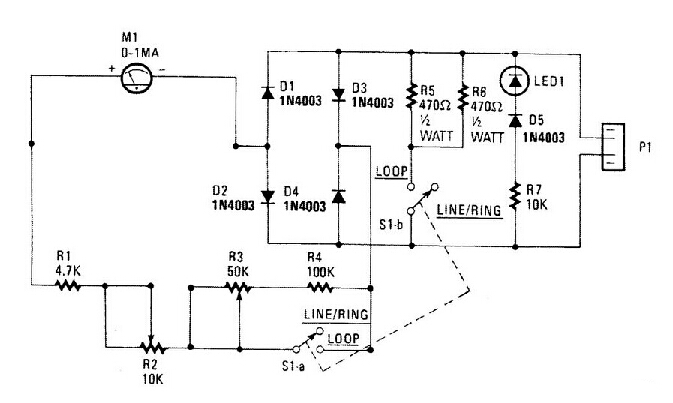Description of Phone Line Tester
Phone line tester is a pockets-sized device used for basic troubleshooting of analog phone systems as well as the line polarity. It monitors phone lines for digital-tone quality and signal power, tests of correct jack polarity (detects reversed tip and ring), and indicates call addressing for correct telephone extensions.
What is Phone Line Tester Used For?
Phone line tester is mainly applied to check the operating parameters of the telephone company’s wiring at the modular connector which includes the open circuit or “on-hook” line voltage, the ringer voltage, and the polarity of the line. The phone line’s voltage conditions are indicated by a meter and the polarity of the line connections is indicated by an LED. The wires in the phone cables are colour-coded, with the green wire being the positive side, and the wire being the negative side. When there is no load on the line, that is, when all phones in your home or office are oil hook, the measured voltage at your phone’s modular connector should be greater than 40-volts DC, give or take a smidgen. And normally, polarity is normally not a problem for most standard phones will work regardless of the polarity of the DC voltage on the telephone line. However, reversed line polarity can interfere with certain kinds of switching equipment, in particular, some of the low-cost conference and multi-use switchers, so we’ve provided for that test.
How does a Phone Line Tester work?
The phone line tester shown in the following picture is connected to the phone line through modular connector P1. The tester only uses two of its four connectors-the red and the green. If it is correct-that is, if the green wire is the positive side-and the red wire is the negative side, nothing will happen. If the situation is reversed. The LED will light. With switch SI Set for LINE/RING. Both S1-a and S1-b are open and the meter indicates the condition of the line-voltage. Any line voltage reading in the LINE OK range (more on the meter in a moment) indicates a line voltage higher than 40-volts DC. If the telephone is caused to ring, either by using a ring back number or by dialing from another phone, the meter will indicate RING OK, and the LED will pulse (indicating AC), if the ringing voltage/current is correct. The actual position of the meter’s pointer depends on how ringers are connected across the line. (Three or more of the old-fashioned ringers can excessively load the ringing voltage if the local telephone company has not corrected for your ringer load.) When S1 is closed the voltage range of the meter is changed and a nominal load resistance of 230 ohms (R5 and R6) is connected across the line to emulate the off hook load of the telephone. If the meter indicates LOOP OK, you can be certain that you have sufficient loop voltage for satisfactory telephone operation. If you place another load on the line, perhaps by taking an extension telephone off hook, the meter reading will almost invariably drop below the LOOP OK range. That is perfectly normal; the line is operating properly when a single loop load results in a LOOP OK meter reading. That is how to test telephones for proper connection. If lifting the handset causes the meter reading to drop, you can at least be certain that the telephone’s hook switch is working and that the repeat coil is connected to the line.

Features of Phone Line Tester
- Receiving and reproducing telephone system dial tone to determine the quality of the tone
- Equipped for jack and cross-connect systems access
- Receiving tracing signals for identifying specific conductors in a cable run (TRACE function requires a separate tone generator)
- Volume control to adjust test tones
- Durable, moisture-resistant case and speaker for long-life durability
